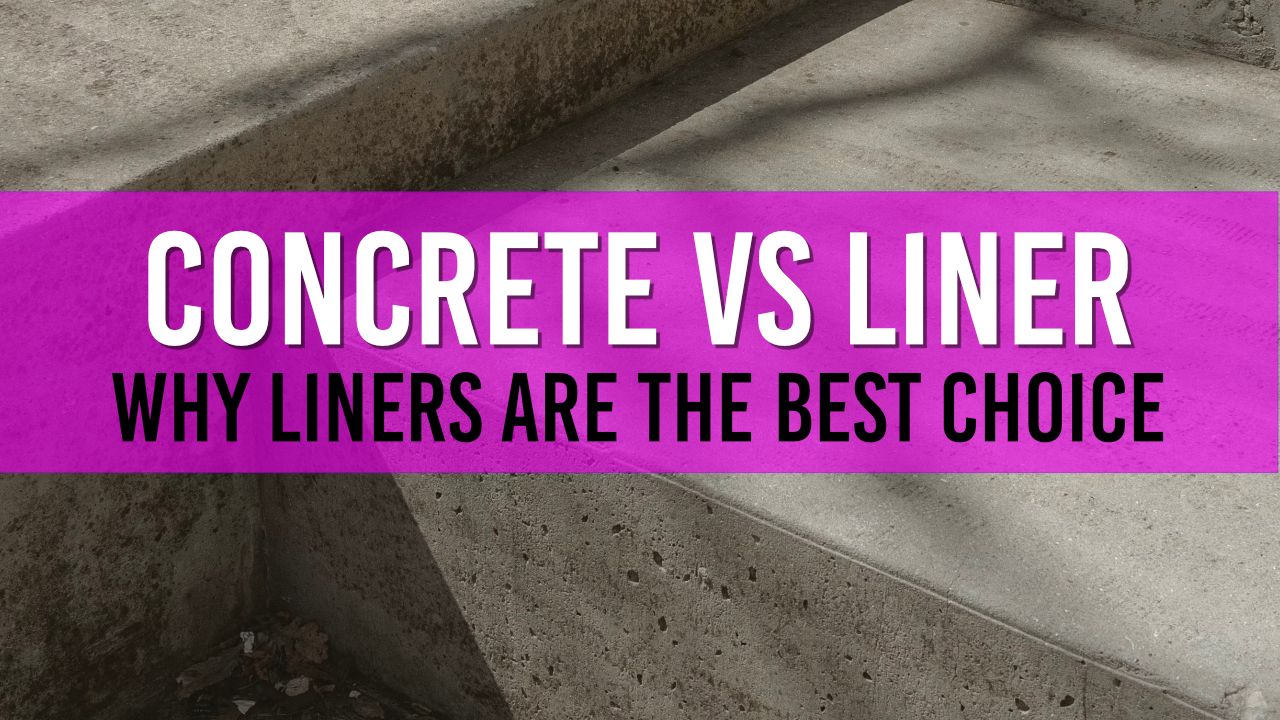The Advantages of Using a Pond Liner vs. Concrete
You may be tempted to use concrete instead of a pond liner. Although concrete bases appear more "solid", a pond liner is less likely to leak, has lower installation costs and gives you more flexibility in your pond design.

Table of Contents
When constructing a pond, choosing the right material for its base is crucial. This article will explore the advantages of using a pond liner compared to concrete, and why you should consider a pond liner for your next project.
Why Choose a Pond Liner Over Concrete?
Easier Installation
One of the main advantages of using a pond liner is the ease of installation. Pond liners are flexible and lightweight, making them easier to handle and install. Concrete, on the other hand, requires more labor and time to install, as it involves mixing, pouring, and curing the concrete.
Flexibility and Adaptability
Pond liners are more adaptable to various shapes and sizes, allowing you to create a unique and customized pond design. Concrete is more rigid and less versatile, limiting your design options.
Lower Cost
In general, pond liners are more cost-effective than concrete. The materials are less expensive, and the installation process is simpler, requiring less labor and equipment.
Less Prone to Leakage

Pond liners are less prone to leakage compared to concrete. Concrete can develop cracks over time due to ground movement or temperature changes, leading to water loss. Pond liners, on the other hand, are made from durable materials designed to withstand harsh weather conditions and ground movement without cracking.
Which Colour Pond Liner is Best?
The color of your pond liner can impact both the aesthetics and functionality of your pond. To learn more about the best color for your pond liner, check out our article on light vs. dark coloured pond liners.
Do I Need a Concrete Base for a Raised Pond?
While concrete can provide a solid foundation for a raised pond, it may not be necessary for all pond designs. To determine if a concrete base is needed for your specific project, consult our guide on concrete bases for raised ponds.
Common Concerns with Pond Liners
Durability
While pond liners are designed to be durable, they can still be punctured or damaged if not installed correctly. Proper installation and protective underlay can help prevent these issues.
Maintenance
Pond liners do require some maintenance to ensure they remain in good condition. Regularly check for signs of wear or damage, and make any necessary repairs to prevent leaks.
Environmental Impact
Some pond liners are made from materials that can have a negative impact on the environment. It is essential to choose an eco-friendly pond liner that is safe for your pond's inhabitants and the surrounding environment.
In conclusion, pond liners offer numerous advantages over concrete, making them an ideal choice for many pond projects. Their ease of installation, flexibility, cost-effectiveness, and lower likelihood of leakage make them a popular choice for pond enthusiasts.
Frequently Asked Questions (FAQ)
Q: What type of pond liner should I choose for my pond?
A: Pond liners are available in various materials, including EPDM rubber, PVC, and HDPE. Each material has its pros and cons, so it's essential to research which one is best suited for your specific pond needs.
Q: How long do pond liners typically last?
A: The lifespan of a pond liner depends on the material, installation quality, and maintenance. High-quality pond liners, like EPDM rubber liners, can last up to 20 years or more if properly maintained.
Q: Can I install a pond liner myself, or should I hire a professional?
A: It is possible to install a pond liner yourself with proper planning and preparation. However, if you're unsure about the process or need assistance, hiring a professional can save time, ensure proper installation, and reduce the risk of future issues.
Q: Can I use a pond liner for a wildlife pond?
A: Yes, pond liners can be used for wildlife ponds. Just make sure to choose an eco-friendly material that won't harm the pond's inhabitants or the surrounding environment.
Q: How do I repair a punctured or damaged pond liner?
A: Pond liner repair kits are available for fixing small punctures or damage. These kits typically include adhesive and patches made from the same material as the liner. Follow the manufacturer's instructions to ensure a proper repair.
Q: Can I use a pond liner in a pond with fish?
A: Yes, pond liners are suitable for fish ponds. Choose a liner material that is safe for fish and ensure proper installation to prevent any issues with water quality or fish health.
Q: How do I calculate the size of the pond liner I need?
A: To calculate the size of the pond liner needed, measure the length, width, and depth of your pond. Then, use our pond liner size calculator to determine the appropriate size liner for your project.
Q: How can I prevent pond liner damage from plants or wildlife?
A: To prevent damage from plants or wildlife, use a protective underlay beneath your pond liner. This additional layer provides a barrier against sharp objects, such as rocks or roots, and can help deter burrowing animals from causing damage.

